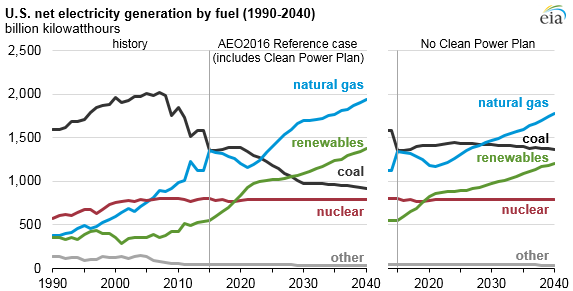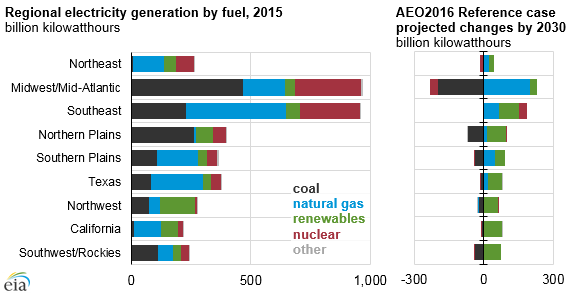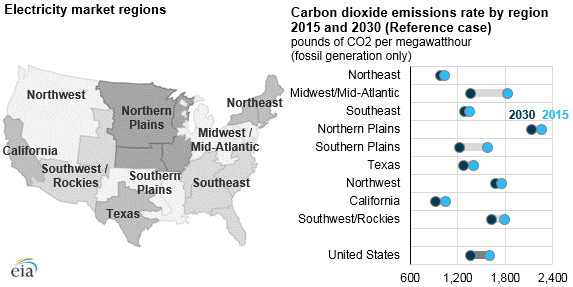If the CPP passes, natural gas growth will double and renewables will show much stronger growth: EIA
The extent to which renewables and natural gas continue to grow in terms of their overall percentage in the energy generation mix in the United States will depend on the future of the EPA’s Clean Power Plan, according to new data from the EIA.
The future of the Clean Power Plan remains undecided currently. In May of this year, the D.C. Circuit Court of Appeals made an unusual decision and announced that oral arguments to assess the merits of the EPA’s program would take place before a nine-judge panel. Typically, arguments would first be reviewed by a three-judge panel before parties appealed the case to the full panel of judges.
Fate of Clean Power Plan: September 27
The decision to put the case before the full panel of judges is believed to have been made in order to speed up the case, which certainly would have been appealed regardless of the outcome before the three-judge panel. The move pushed back the date for oral arguments, however, moving the start of the case to September 27, 2016.
New data from the EIA shows stronger renewables growth if the plan passes, and that natural gas growth could be more than twice as strong if CPP is implemented.
Even without the Clean Power Plan, significant growth in renewables generation is projected throughout the country, due in large part to Congress’s recent extension of favorable tax treatment for renewable energy sources, said the EIA. If CPP is not put in place, renewables generation is expected to increase at an annual average rate of 3.9%, while natural gas generation will grow at 0.6% per year through 2030. If the plan is implemented, renewables and natural-gas fired generation are forecast to grow at 4.7% and 1.6% annually from 2015 to 2030, respectively.
All regions expected to add more renewables generation, while Midwest/Mid-Atlantic sees large natural gas additions
In the final version of the Clean Power Plan, states with higher intensity levels generally have greater requirements for reduction of CO2 emissions. Regions such as the Midwest/Mid-Atlantic, Southwest/Rockies and Norther Plains – regions with high levels of coal production – tend to have greater reliance on coal-fired electricity generation. These regions have among the highest CO2 reduction requirements and re expected to have the largest shifts in their generation mix.
In the Midwest/Mid-Atlantic region, a large decline in coal generation is offset by an increase in natural gas generation and relatively modest growth in renewable generation. These projected changes are expected to result in a 26% decline in the region’s emission rate – from 1,826 to 1,357 pounds of CO2 per megawatthour, the largest drop of any region in both percentage and absolute terms.
The Southwest/Rockies region is projected to see an expansion of renewables generation that is nearly twice as large as the decline in coal generation. In the Northern Plains region, a decline in coal generation is exceeded by a slightly larger shift to renewables generation, with smaller growth in natural gas generation. Other regions, such as Texas, the Southern Plains, and the Southeast, rely more on natural gas-fired generation. The projected decline in these regions’ coal generation is more modest, and they all are expected to see strong gains in renewables generation, with some additional growth in natural gas generation, said the EIA.
Finally, the Northeast region and California currently have almost no coal generation and meet most of their demand with natural gas generation, along with renewables generation in California and a mix of nuclear and renewables generation in the Northeast. While the Northwest region does have some coal generation, it has the largest renewable generation total of any region because of its extensive hydroelectric resources. These regions have among the lowest emission reduction requirements, and as a result are expected to register small or no change in generation mix as a result of the CPP.




